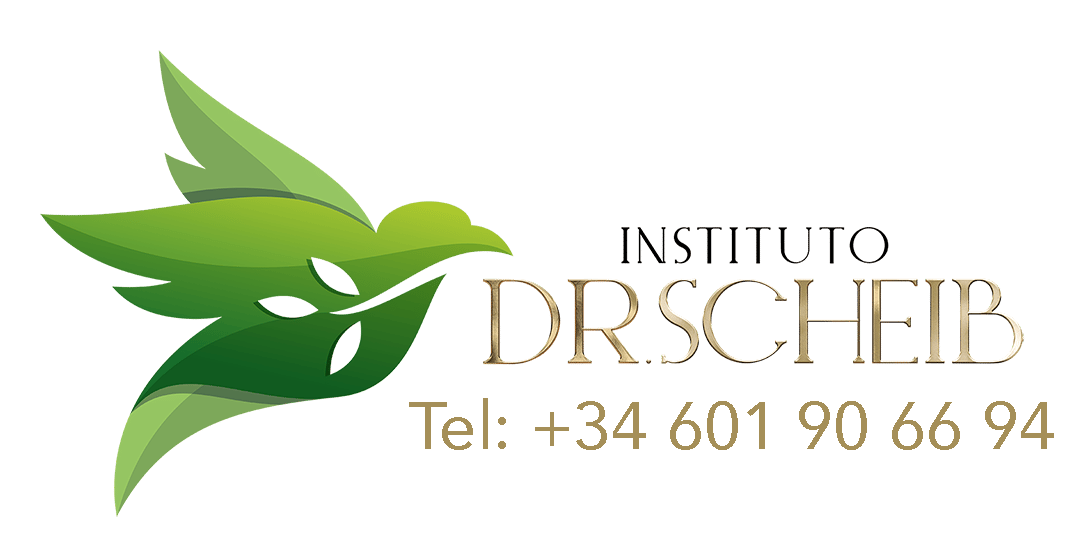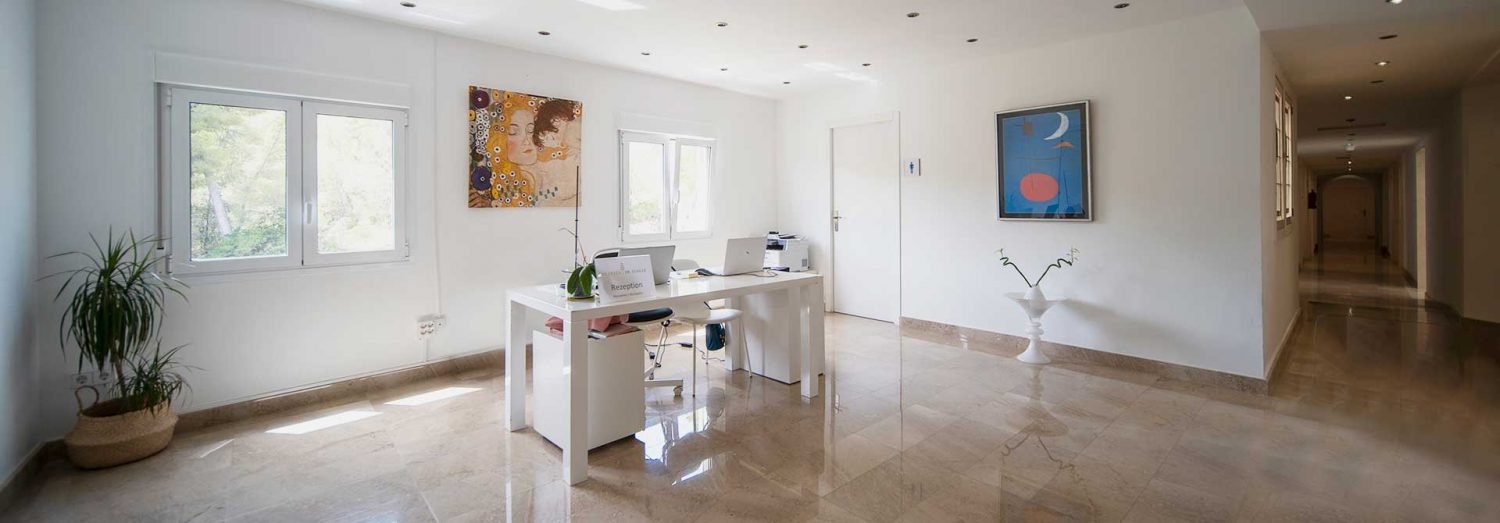Pain management – treatment of chronic pain in Mallorca
We offer an innovative multimodal therapy for the treatment of chronic pain. Pain management in our clinic in Mallorca usually consists of a combination of ketamine infusions, hypnosis, psychotherapy and repetitive transcranial magnetic stimulation (rTMS). Our multimodal pain management therapy is effective for chronic pain, including pain during or after cancer treatment, phantom pain or pain after an operation.
Multimodal pain therapy – treatment of chronic pain
Many medications for chronic pain work well initially, ranging from analgesics and anti-inflammatory drugs (NSRAs) to opiates. Long-term use of painkillers can in turn lead to its own problems, such as stomach and kidney damage or addiction. And not seldomly the painkillers lose their effect over time.
In addition to traditional pharmacological treatment, we also offer procedures for the treatment of chronic pain at our clinic in Mallorca that target the central nervous system. This is known as multimodal pain therapy.
Additional procedures for the treatment of chronic pain:
- Hypnosis
By treating chronic pain with hypnosis, pain can be temporarily eliminated completely. Self-hypnosis enables patients to put themselves into a light trance state at any time, thereby reducing the pain
- Ketamine infusion therapy
Ketamine is an anesthetic and as such also makes chronic pain disappear temporarily. However, it also has a strong effect against depression, which exacerbates the perception of pain and is often triggered by pain. It also helps to overwrite the pain memory. In neuropathies and CRPS in particular, ketamine infusions lasting several hours often lead to lasting and permanent improvements..
- Repetitive transcranial magnetic stimulation
In the treatment of chronic pain with repetitive transcranial magnetic stimulation (rTMS), the parts of the brain responsible for pain processing are stimulated using strong magnetic impulses. This changes the perception of pain and chronic pain improves or disappears. Ketamine infusions increase neuroplasticity; the combination of ketamine infusions and neurostimulation can make the treatment of chronic pain more effective.
- Biofeedback and Neurofeedback
In biofeedback, tension can be made clear and relaxation can be specifically trained. This is particularly helpful in the treatment of tension headaches, migraines and back pain.
Neurofeedback influences the activity of certain areas of the brain, which also has a significant impact on the perception of pain. The effectiveness of these methods can also be increased by parallel ketamine therapy.
Other psychotherapy methods such as EMDR (eye-movement-desensitization and reprocessing) or cognitive behavioural therapy can also be used.
Multimodal pain therapy also includes regional stimulation procedures, treatment of nerve blocks, intensive physiotherapy and sports therapy. We use these methods in pain therapy on Mallorca in cooperation with experienced specialists and physiotherapists.
Multimodal treatment of chronic pain using all effective procedures leads to lasting improvements for most of our patients:
" I suffered from severe neuropathic pain in my legs and arms, sometimes it was so severe that I couldn't sleep. I was awake for hours and could only sleep for about 3 hours a night. After just 2 ketamine infusions, I felt a significant improvement: the severe pulsating pain in my limbs was significantly alleviated and my quality of sleep also improved. I can look forward to going to bed again, knowing that I will have a restful sleep. I can only recommend this treatment.."
– Mrs. W. G. 82 J, chronic neuropathic pain and Guillan Barre syndrome during 6 years
Chronic pain – effects and causes
Multimodal pain therapy is the most modern, scientifically based form of therapy for the treatment of chronic pain. The basis of this form of therapy is the understanding of chronic pain as an independent disease and bio-psycho-social problem.
Pain is initially a useful signal that tells us that something is wrong in our body. In chronic pain, this signaling function is lost. The pain itself becomes an illness. Sometimes the causes of the pain have long since been resolved, but the pain has become chronic. Chronic pain impairs quality of life and often leads to depression. On the other hand, there are also so-called somatized depressions, which mainly manifest themselves through chronic pain. And depression usually intensifies the perception of pain intensity.
The perception of “pain” always originates in the brain. There, signals from the body are evaluated accordingly and perceived as pain or not. There are people with phantom pain, for example, whose pain memory causes parts of the body to hurt that are no longer there after an amputation. On the other hand, serious injuries can be completely blocked out in a trance; the pain signals are blocked out or reinterpreted in the brain.
It therefore makes little sense to differentiate whether the pain has a physically comprehensible cause or is “psychosomatic”. All chronic pain is a problem in the central nervous system and must also be treated there.
Pain plays a decisive role in many illnesses:
Fibromyalgia
- chronic regional pain syndrome (CRPS, Sudeck’s disease)
- rheumatic diseases
- Degenerative diseases of the skeletal system
- Consequences of diabetes (neuropathy)
- Injuries following accidents (e.g. phantom pain)
- Cancer and pain as a result of treatment (chemotherapy, radiotherapy)
- among many others
If you wish to view embedded videos on these pages, personal data will be sent to the operator of the video portal. We embed our videos with the “no cookie” option from YouTube. This means that significantly less user data is sent to YouTube and none at all to the DoubleClick advertising service.
However, it is possible that the video provider stores your accesses and can analyze your behavior. By playing this video, you agree to this.
If you are interested in multimodal pain therapy in Mallorca or Cologne, contact us now and we will get back to you promptly and without obligation to discuss the best possible treatment for your chronic pain in person:








